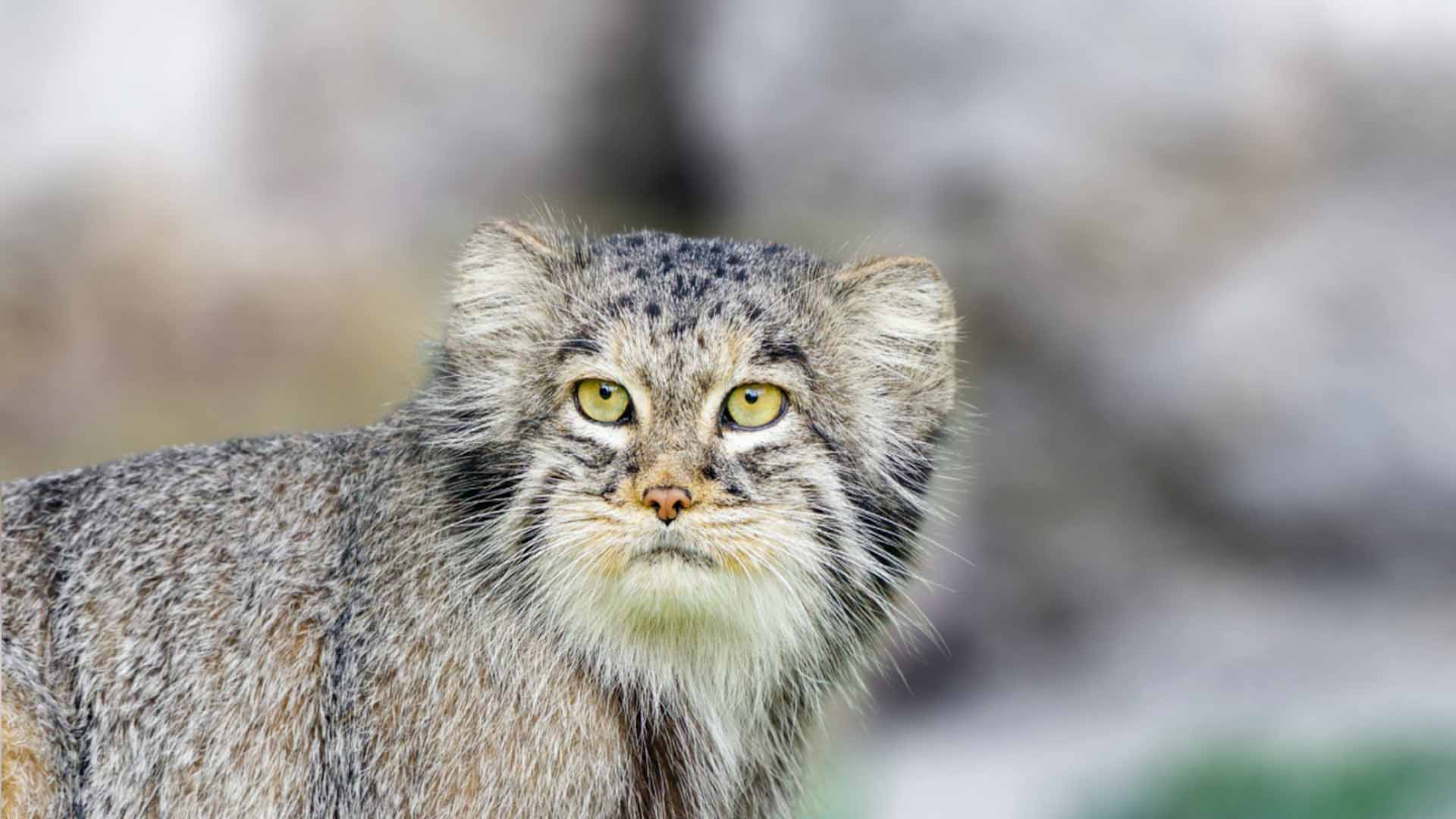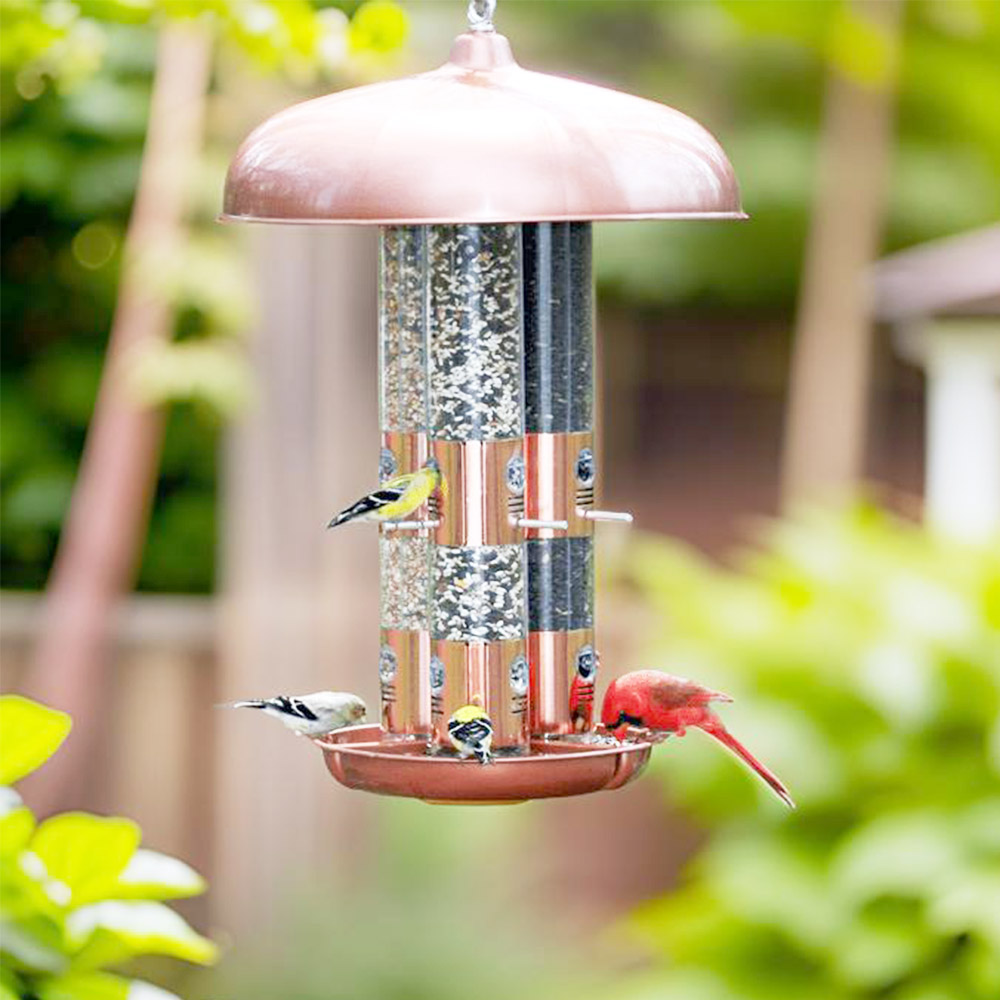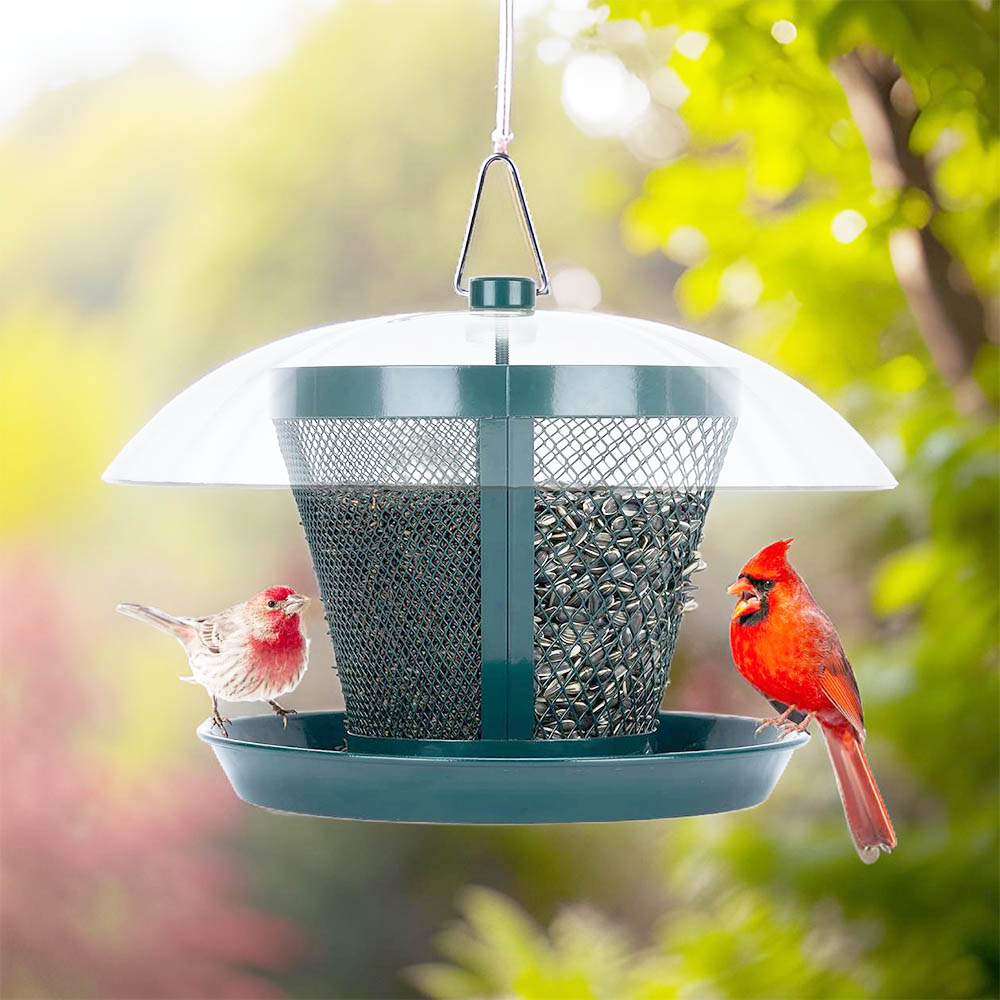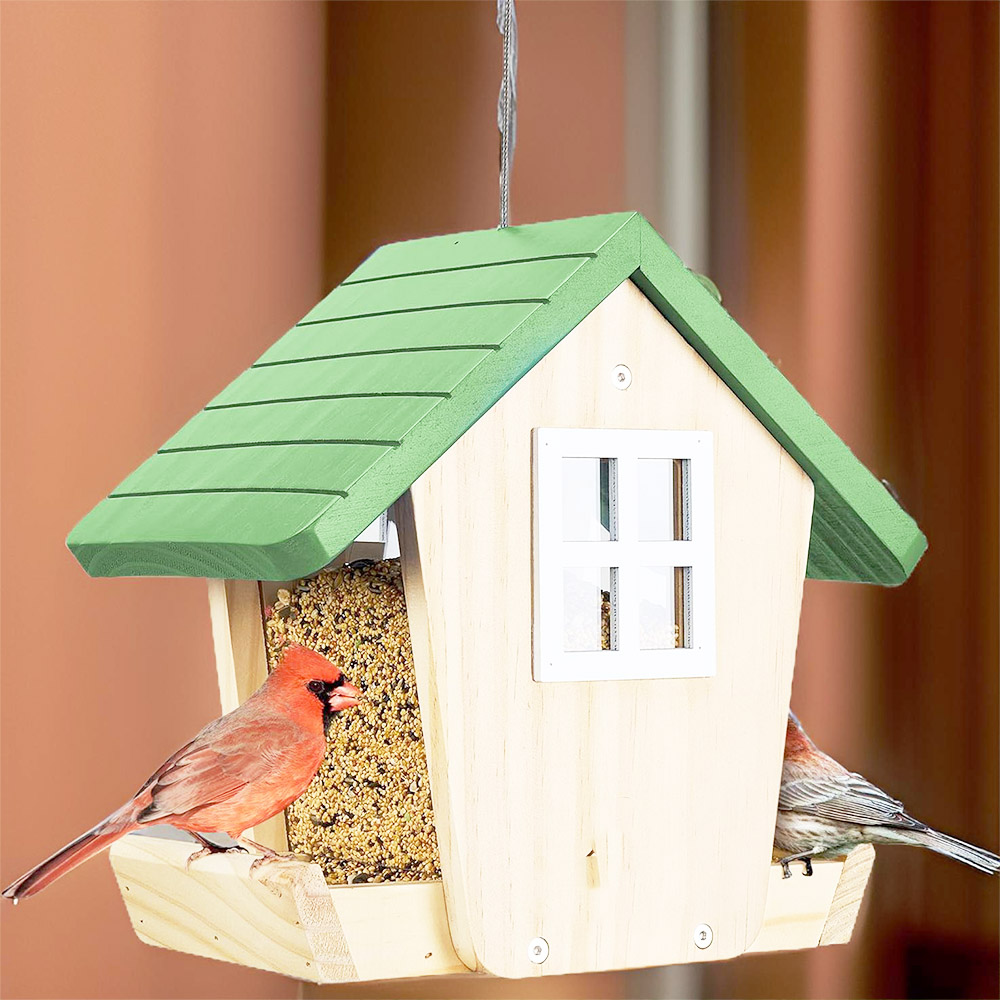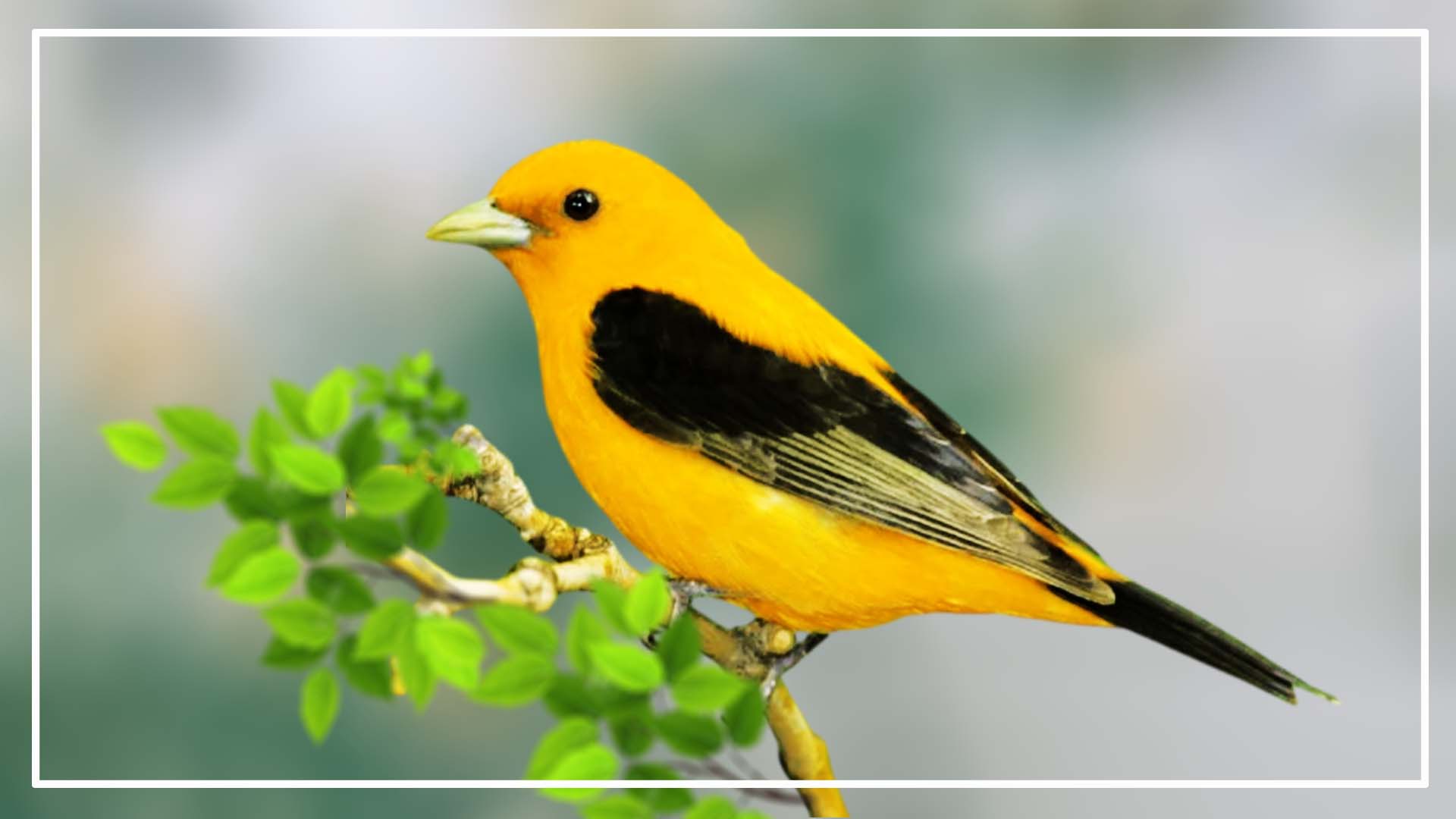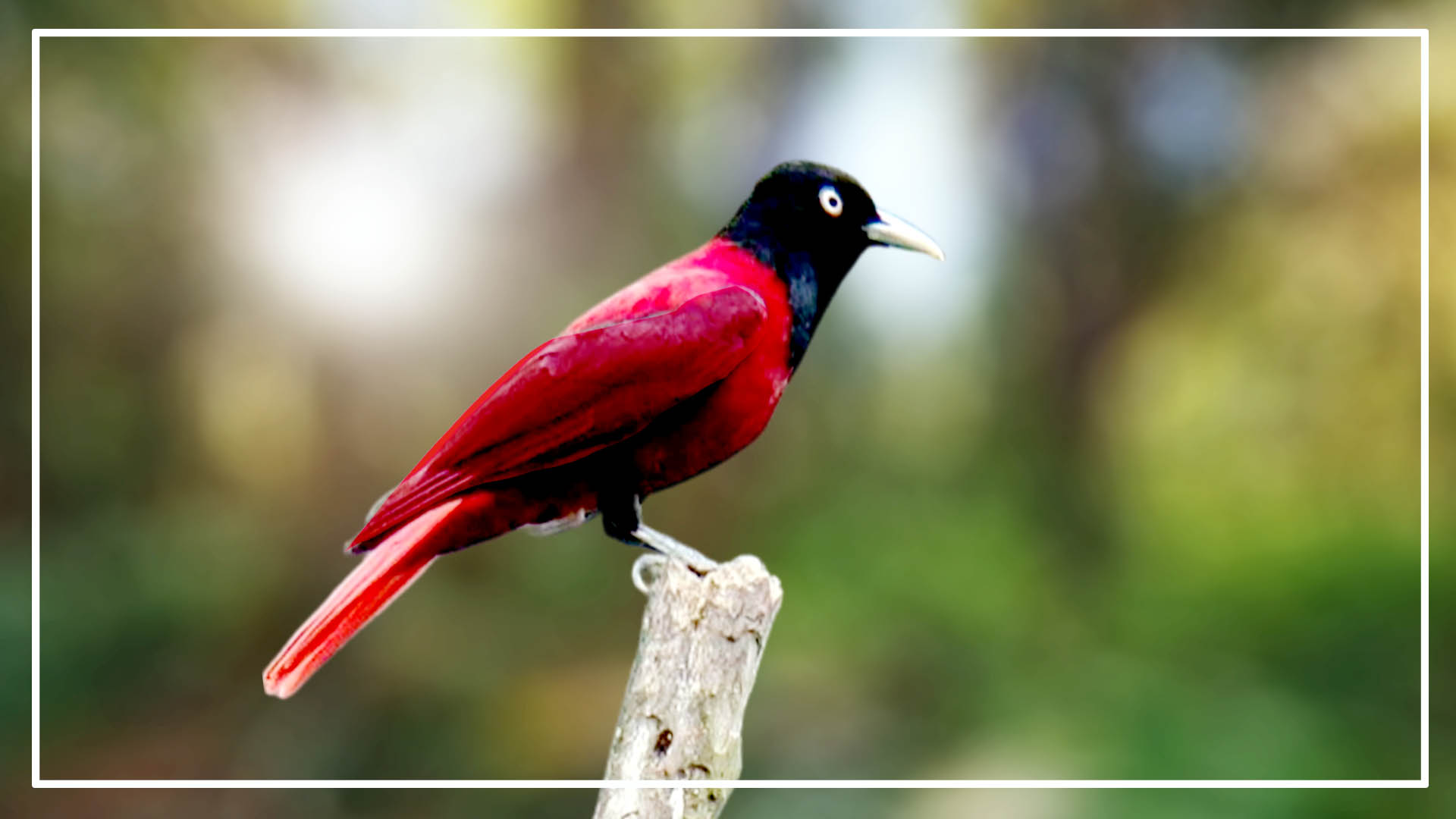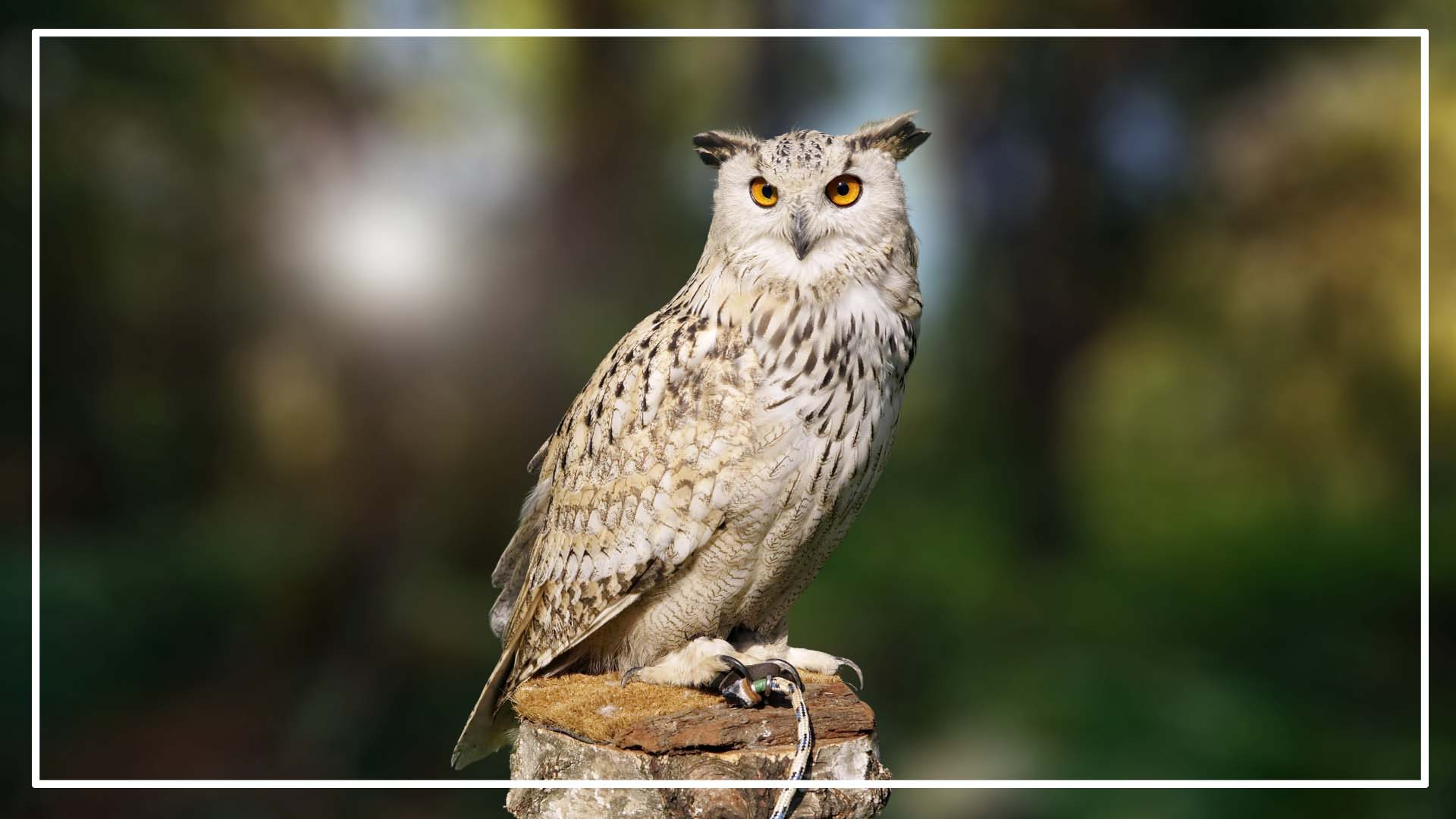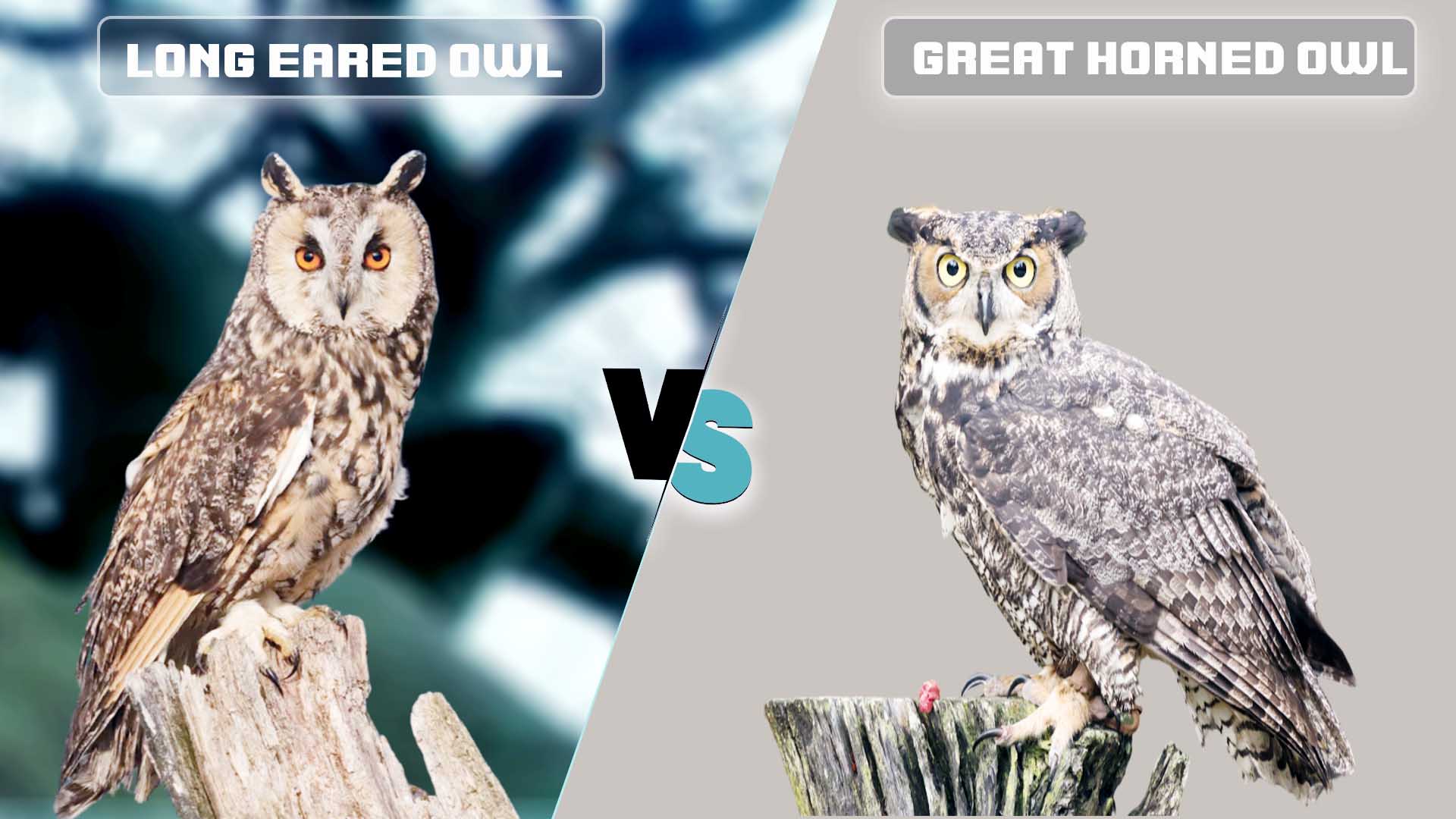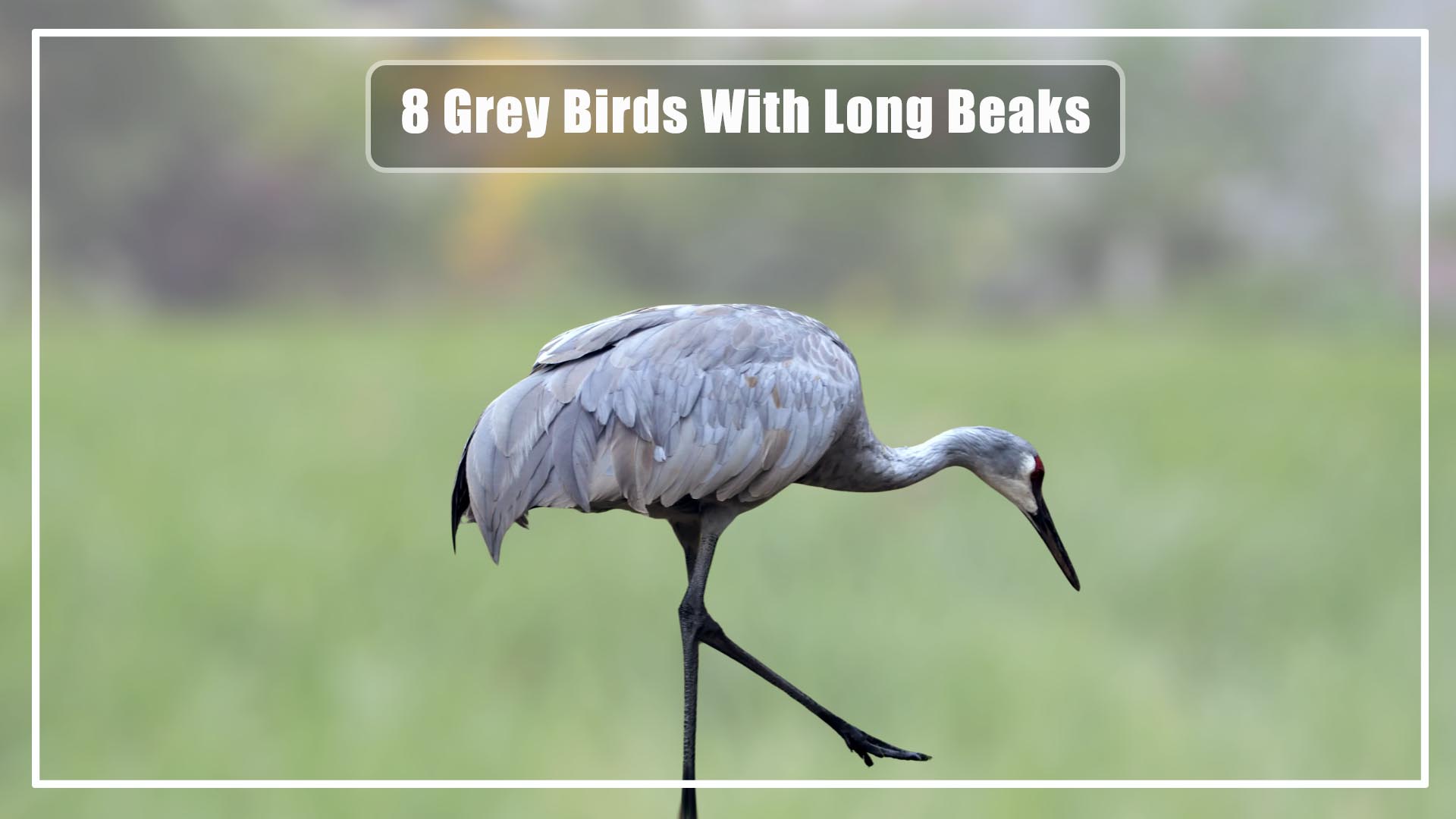Yellow birds have always been a source of fascination and wonder for humans. Especially, yellow birds with black wings are more fascinating to me. I travel the various countris to discover new types of birds. Today I will share a group of birds which has yellow bodies and black stripes on their wings.
Here you can learn about three types of birds small, medium-sized, and large yellow birds with black wings. There are some birds are black black heads with yellow bodies.
However, Here I will discuss everything so that you can find out about the yellow birds. In my previous post, I also discussed black birds with yellow stripes on their wings
Small Yellow Bird With Black Wings
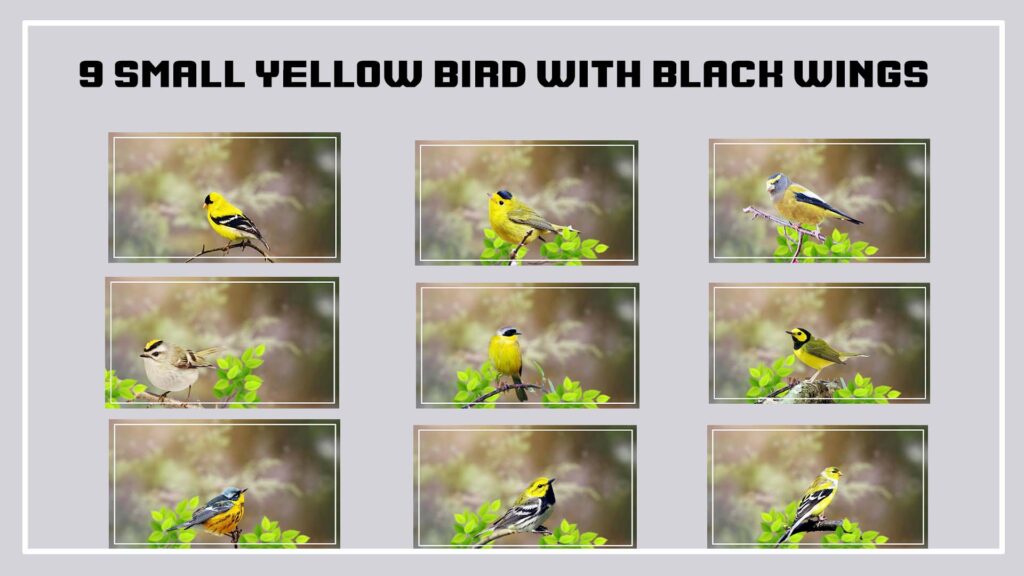
There are nine small yellow birds that have black wings. Those nine birds are American Goldfinch, Wilson’s Warbler, Evening Grosbeak, Golden-Crowned Kinglet, Common Yellowthroat, Hooded Warbler, Magnolia Warbler, Black-Throated Green Warbler, and Lesser Goldfinch. Each of the birds has unique features, coloration, and food habits.
American Goldfinch
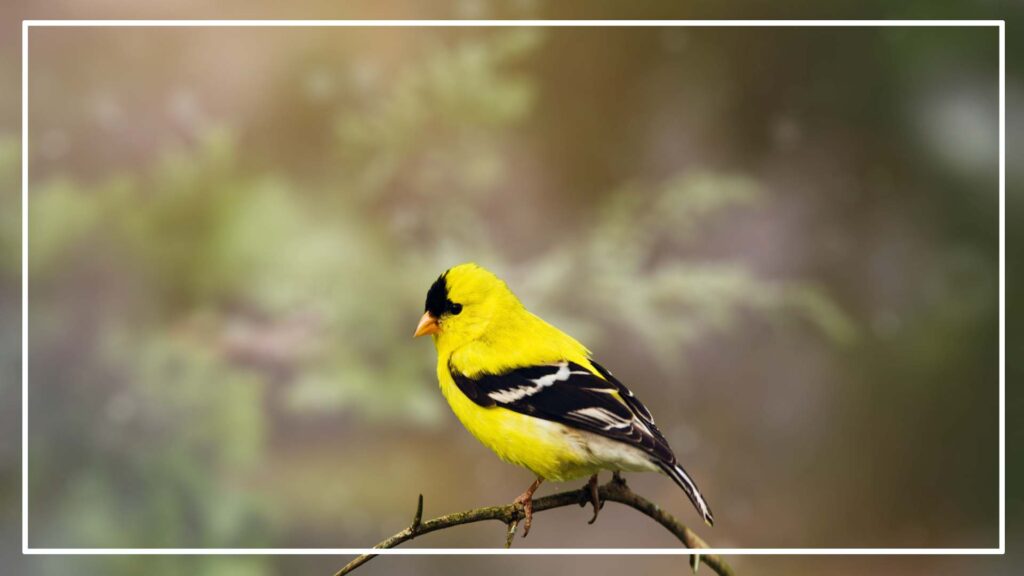
The American Goldfinch is a small yellow bird with black wings. I found the birds in North America. Although the birds are also seen in southern Canada and southern United States. Its wings are black with white stripes. American Goldfinch size is around 4.5 to 5 inches in length.
The American Goldfinch is a beautiful bird which always held a special place in my heart. Its striking yellow plumage, often likened to the bright glow of a summer sunflower, never ceases to amaze me.
One of the aspects I find most captivating about American Goldfinches is their seasonal wardrobe change. In the summer months, their feathers display an electrifying yellow, like drops of sunshine in flight. But come winter, they transform into a subtler, yet still lovely, olive-brown hue. Witnessing this annual transformation is like observing nature’s own fashion show.
Wilson’s Warbler

Among the yellow birds, The Wilsons are one of the small yellow birds with black wings. It has a black head that looks like a cap on its head. When it flies, you can see the black and a little bit of yellow striping on its wing.
When I see the bird, I find most intriguing about it. That is their migratory journey. They spend their summers in the northern parts of their range, including Canada and Alaska, and then embark on an incredible journey to Central and South America for the winter.
Wilson’s Warbler is a small bird measuring about 4.5 inches in length. The males sport a brilliant lemon-yellow plumage, which extends from their throats to their underbellies, creating a captivating contrast with their olive-green wings and backs. This radiant yellow is truly a sight to behold amidst the greenery of their habitat.
I’ve observed them in the lush woodlands and thickets of North America. Particularly in the western parts of the continent, they seem to be in perpetual motion. One of the aspects Witnessing these tiny birds travel thousands of miles is a testament to their endurance and determination.
Evening Grosbeak
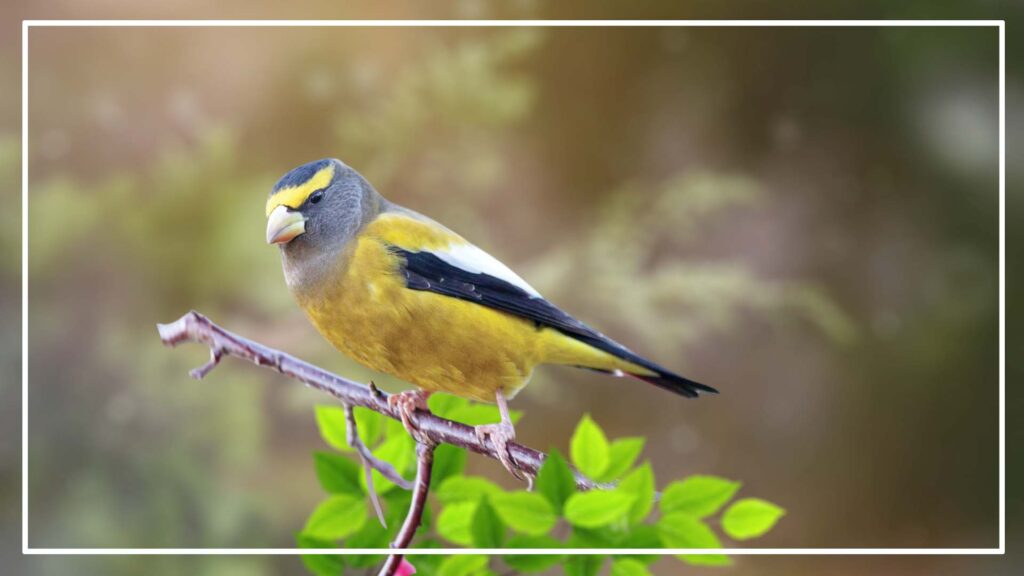
Among the yellow birds, the Evening Grosbeak is a small bird with black wings. This bird’s size is around 7 to 8 inches in length. Male Evening Grosbeak are larger than female. When you see the male Evening Grosbeak, you may think is a medium-sized bird.
However, I discovered this bird in North America although it is found in most countries. Especially, I like its color pattern. Males have yellow plumage on their bodies and bold black wings with white strips. These eye-catching colors make them a true spectacle among North American songbirds.
As a passionate bird watcher, my encounter with the Evening Grosbeak was a true delight. Its vibrant yellow feathers, black wings, and striking white patches left me in awe. The Evening Grosbeak’s distinctive appearance and cheerful presence made it a memorable addition to my bird-watching adventures.
Golden-Crowned Kinglet
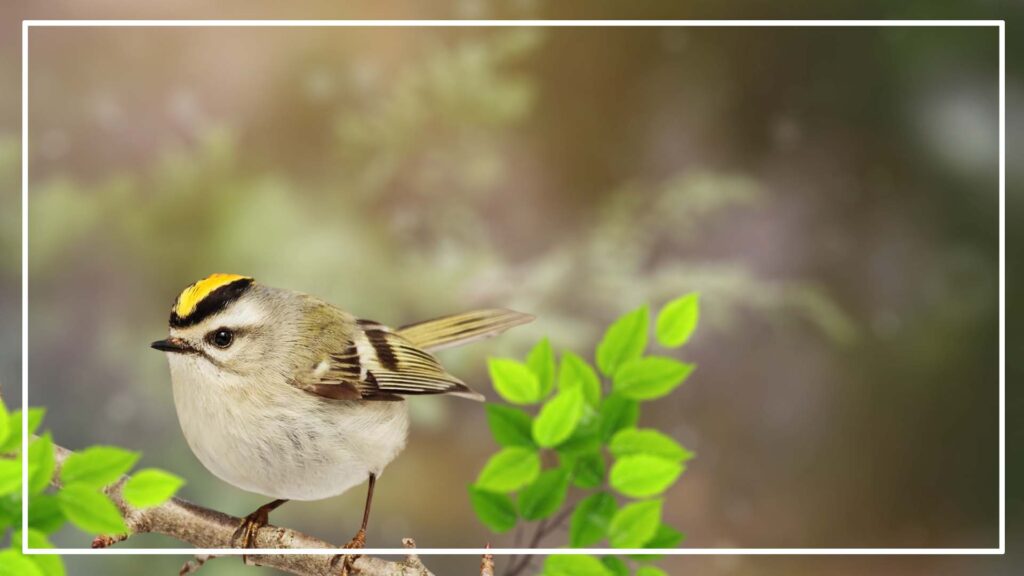
In my recent bird-watching experience, I discovered the Golden-Crowned Kinglet. Golden-crowned kinglet is a small yellow, white, and black mixed bird with a black stripe on its wings. You can group it as a brown bird with black stripes on its wings. Its size is around 4 inches that are smaller than other yellow bird.
Its golden-yellow crown, framed by black and white stripes, immediately drew my attention. These intricate markings resembled a tiny royal crown perched atop its head, adding a touch of regal elegance to its appearance. Its bright yellow plumage and active demeanor made it stand out even more.
The Golden-Crowned Kinglet’s agility amazed me as it flitted through the branches of trees and shrubs, constantly on the move in search of insects and spiders. It was like a tiny acrobat performing high in the treetops.
Observing the Golden-Crowned Kinglet in its natural habitat was a true delight. This tiny bird’s stunning colors, lively behavior, and enchanting song made it a memorable highlight of my bird-watching experience. It reminded me that even the tiniest of creatures can bring immense joy to those who take the time to appreciate their beauty.
Common Yellowthroat
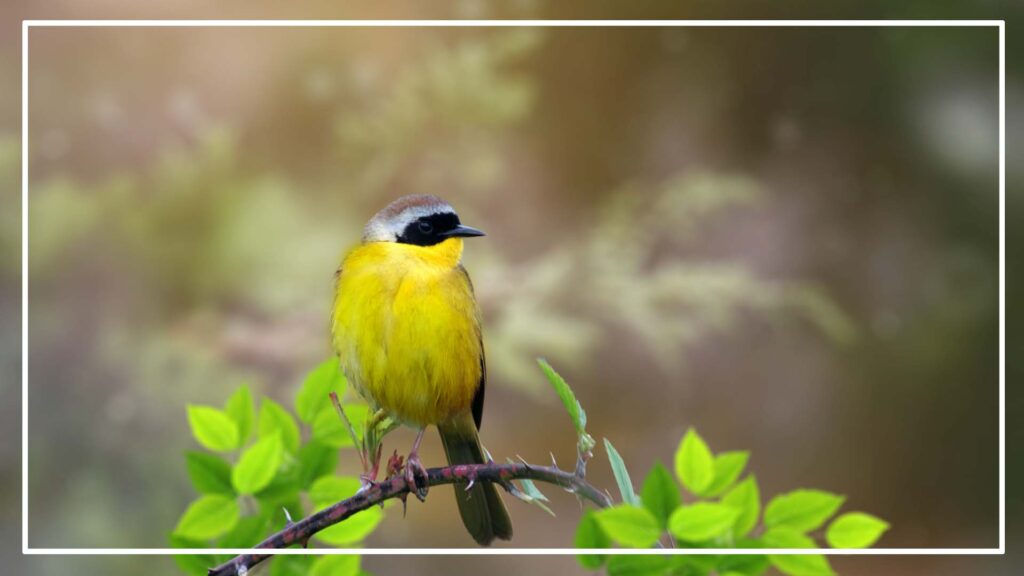
One sunny morning, while I was out bird watching, I had the pleasure of encountering the Common Yellowthroat. It is a small yellow bird with a black stripe on its wings. Its bright yellow throat and striking black mask caught my eye immediately. Its size is around 4.5 inches long.
As I observed it, I was amazed by its agile movements in the thickets and wetlands where it dwells. The Common Yellowthroat is known for its cheerful “Wichita-Wichita-Wichita” song, which echoed through the reeds and cattails as it foraged for insects and spiders.
What fascinated me the most was its habitat preference. This warbler thrives in wetlands and marshy areas, where the dense vegetation provides excellent cover for its nest and hunting grounds. Watching it flit among the reeds, I couldn’t help but appreciate how well-adapted it is to its environment.
My experience with this little warbler served as a reminder of the incredible diversity of birdlife and the joy that comes from observing these feathered wonders in their natural habitats.
Hooded Warbler
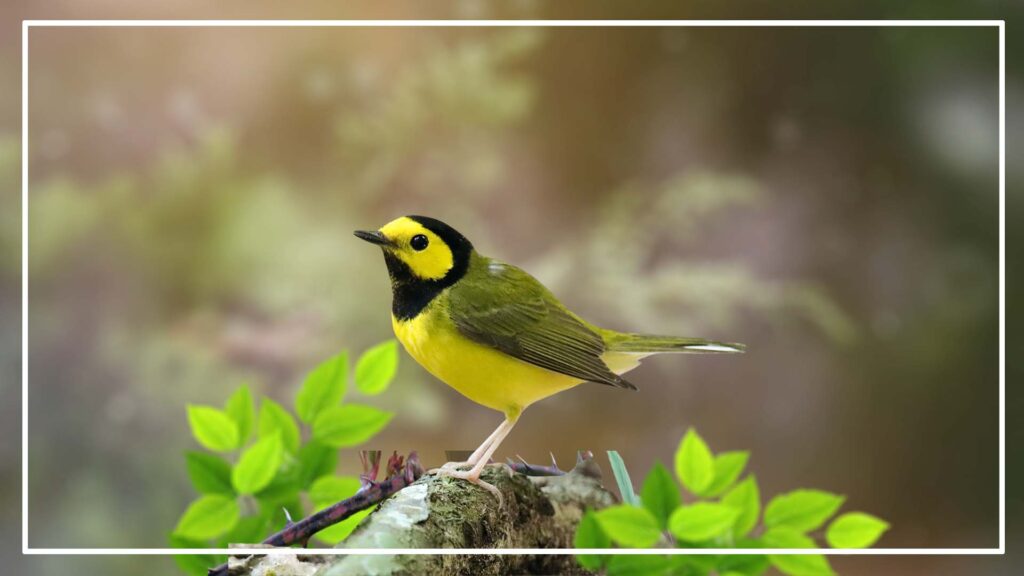
In the midst of a lush forest, my recent bird-watching, I discovered the Hooded Warbler. This small bird measures about 5 inches in length. Its striking appearance instantly captured my heart, especially its neck. It is a yellow bird with a black round on neck.
The Hooded Warbler has a bright yellow body with black wings. This bold black-and-yellow contrast is a visual treat for bird enthusiasts like myself. It’s as if this warbler is wearing a mask ready for a masquerade in the woods.
As I observed, I couldn’t help but be entranced by its lively and agile movements. This warbler darted through the undergrowth with unmatched grace, foraging for insects and spiders. Its cheerful “wee-tee-tee-tee” song filled the air, adding a musical note to the forest’s symphony.
What struck me most about the Hooded Warbler was its preference for dense undergrowth and shrubby habitats. It was as if it had carved out its own secret world within the forest, hidden from casual observers.
Magnolia Warbler
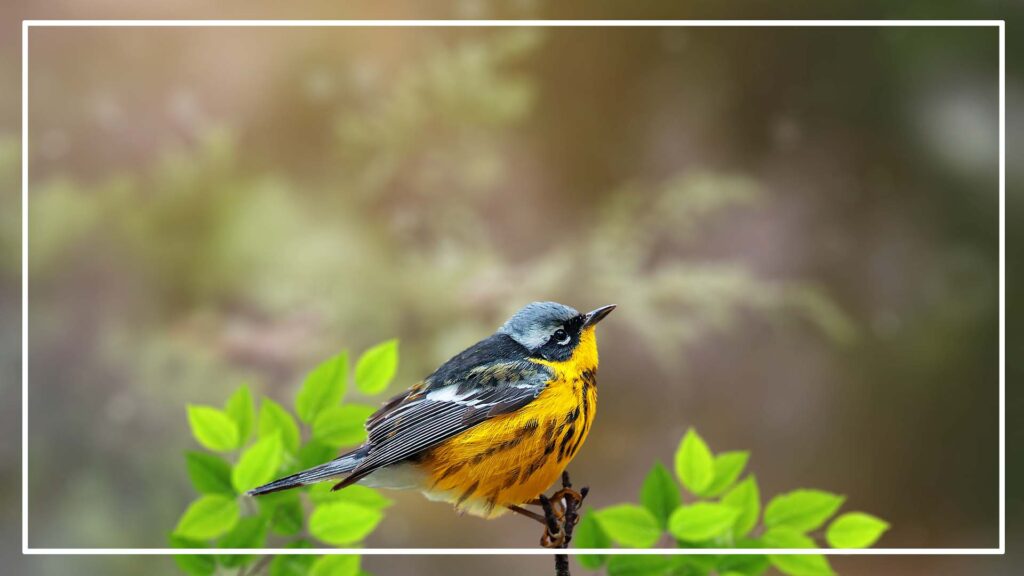
The Magnolia Warbler is a small yellow bird with white and black stripes on the wings. When I saw the bird in our garden, I categorized it as a small yellow and black bird. Males are larger than females and Its average size is around 4.5 inches.
The Magnolia Warbler’s striking black necklace-like markings set against its bright yellow plumage made it a standout performer in the woodland theater. Its colors were reminiscent of a magnificent work of art crafted by nature itself.
As I watched, the warbler’s agile movements among the tree branches and shrubs were a true spectacle. It expertly captured insects and spiders, showcasing its remarkable skill in mid-air foraging.
Black-Throated Green Warbler
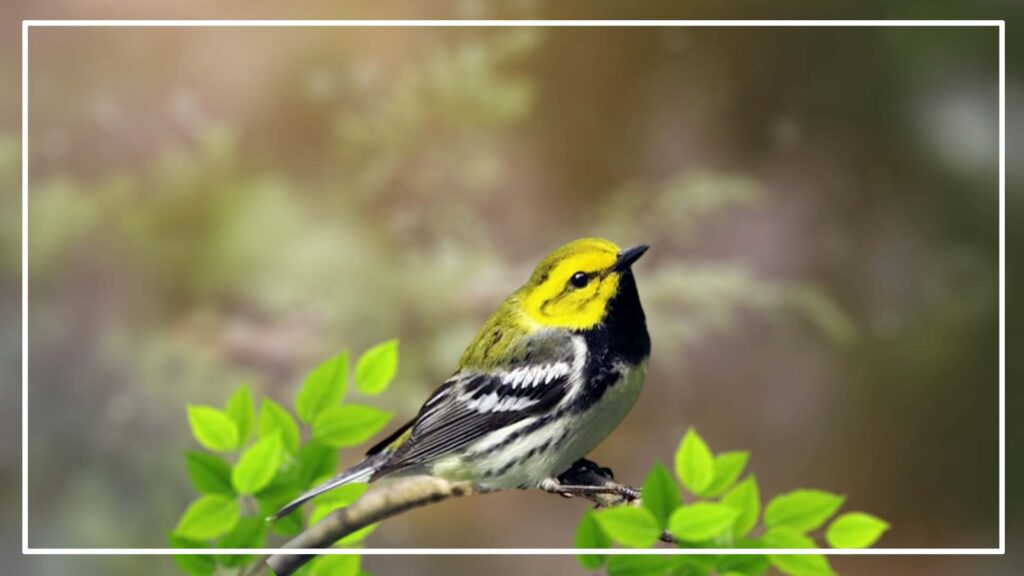
The Black-Throated Green Warbler is a small yellow bird with black wings. I discovered this bird in the forests of eastern North America. It has a white stripe on its black wings. The Black-Throated Green Warbler is an eye-catching color palette. Its bright yellow plumage and distinct black throat and wings with white markings create a visually captivating contrast.
What fascinated me the most was its vocal prowess. Observing its foraging behavior was a treat. These warblers are skilled canopy foragers, deftly capturing insects and caterpillars among the treetops. Their agility and precision in hunting were a testament to their adaptation to their woodland habitats.
Lesser Goldfinch
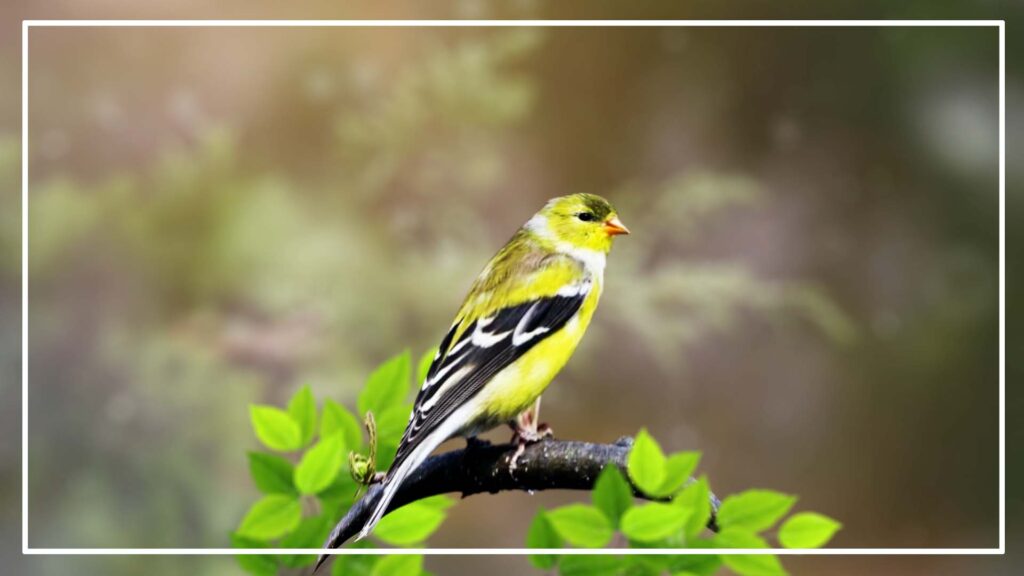
During one of my serene bird-watching outings, I had the delightful opportunity to observe the Lesser Goldfinch. a bird that brought a burst of color and energy to the landscape. Measuring around 4 inches in length, this small but vibrant bird is a true gem among avian species.
The Lesser Goldfinch’s bright lemon-yellow plumage and contrasting black wings immediately caught my eye. Their visual appeal is like a ray of sunshine against the backdrop of green foliage. Watching them flit from branch to branch was a cheerful spectacle.
Medium Size Yellow Birds with Black Wings
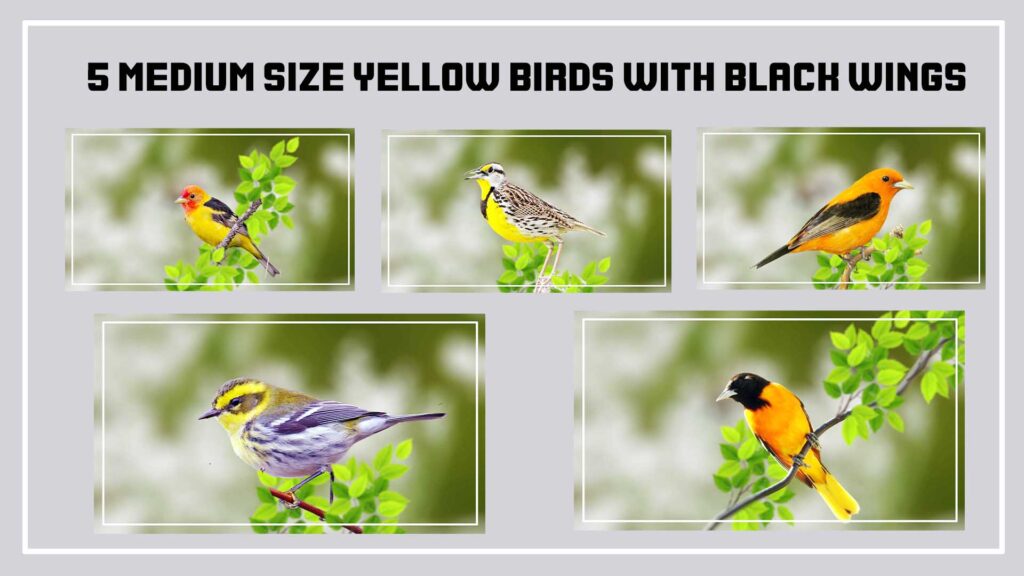
Among the medium-sized yellow birds with striking black wings, there are five birds: Eastern Meadowlark, Scarlet Tanager, Townsend’s Warbler, Orchard Oriole, and Western Tanager. Join me on a journey through the world of these medium-sized, yellow-bodied, black-winged wonders.
Eastern Meadowlark
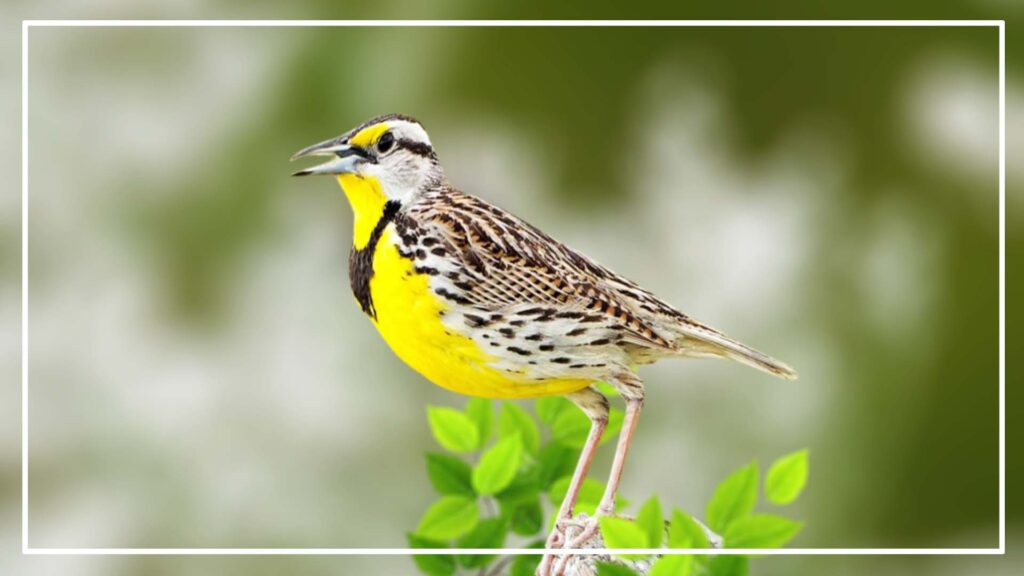
Among the medium-sized yellow birds, the Eastern Meadowlark is a pretty bird. I discovered this bird in America although It may be found the various countries. Its average size is 8.5 inches in length.
The Eastern Meadowlark underparts are bright yellow and it is adorned with a distinctive black V-shaped marking on its chest. This striking coloration was a beacon in the open landscape, making it easily identifiable amidst the tall grasses and wildflowers.
When I saw this bird, I also categorized the bird as a brown and yellow bird with a black stripe in its wings. Its upperpart is brown with a black stripe.
Scarlet Tanager
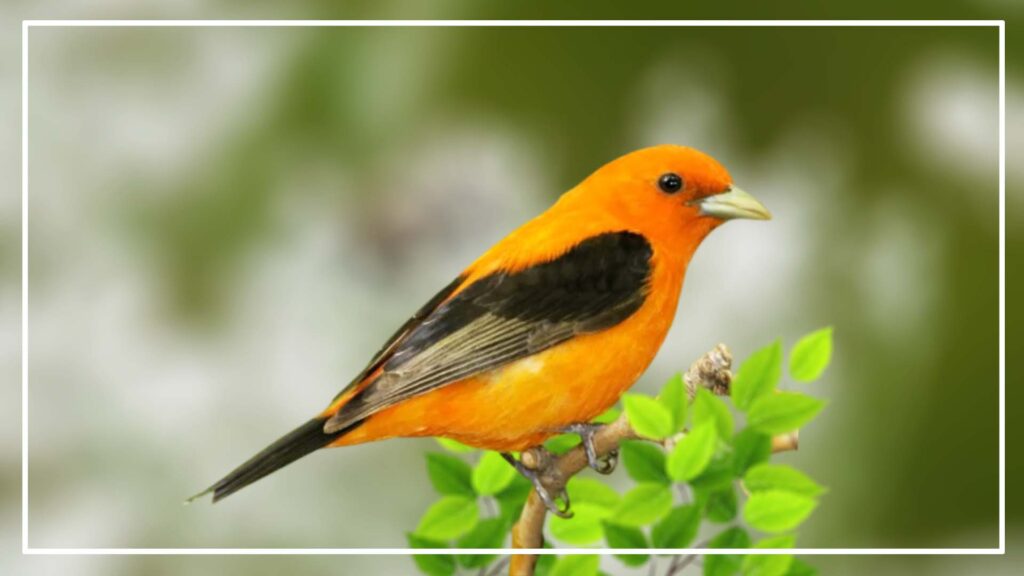
The Scarlet Tanager is a medium-sized bird that has black wings. Without wings, Its whole body is yellow. Its measuring approximately 7 inches in length, immediately captured my attention with its brilliant plumage.
One of the fascinating aspects of this bird is its preference for mature deciduous forests during the breeding season. It was a privilege to observe the tanager perched on the branches, creating a vivid visual contrast against the lush canopy.
Townsend’s Warbler
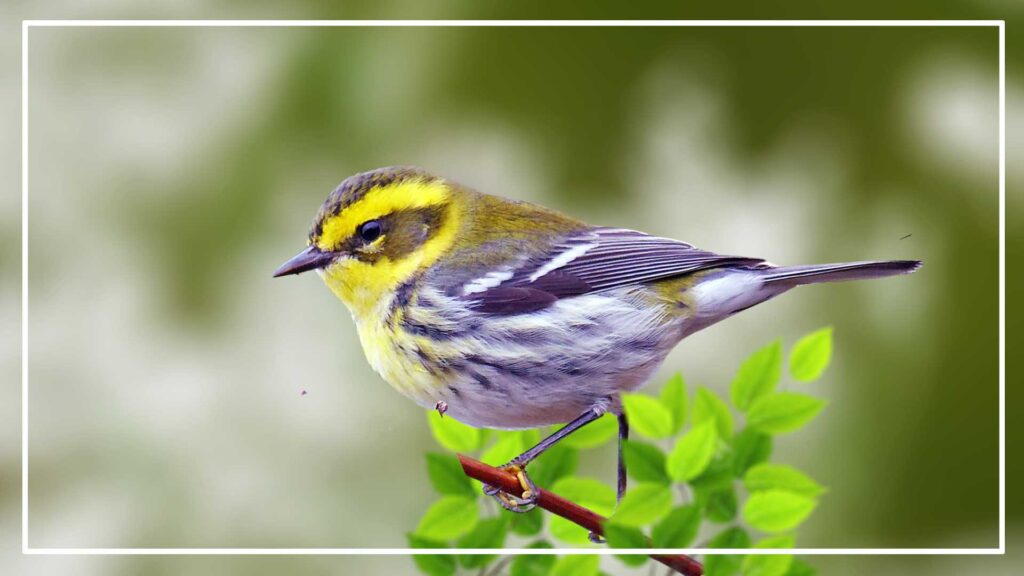
On a crisp morning in the heart of a western forest, I discovered the Townsend’s Warbler. It is a small bird that brings a burst of color and energy to the wooded landscape. This medium-sized warbler, measuring around 4.5 inches, instantly charmed me with its vibrant appearance.
Townsend’s Warbler showcases a striking contrast of colors. Its bright yellow plumage is adorned with bold black streaks on its wings, back, and head, and a distinctive black throat patch.
As I observed, I marveled at its agile and acrobatic movements among the branches. Townsend’s Warblers are skilled aerial foragers, often hanging upside down on tree limbs to capture insects and spiders.
What struck me most was their cheerful and high-pitched songs that filled the forest with music. It felt like a symphony of nature, and the warbler’s contribution added a sweet note to the composition.
Orchard Oriole
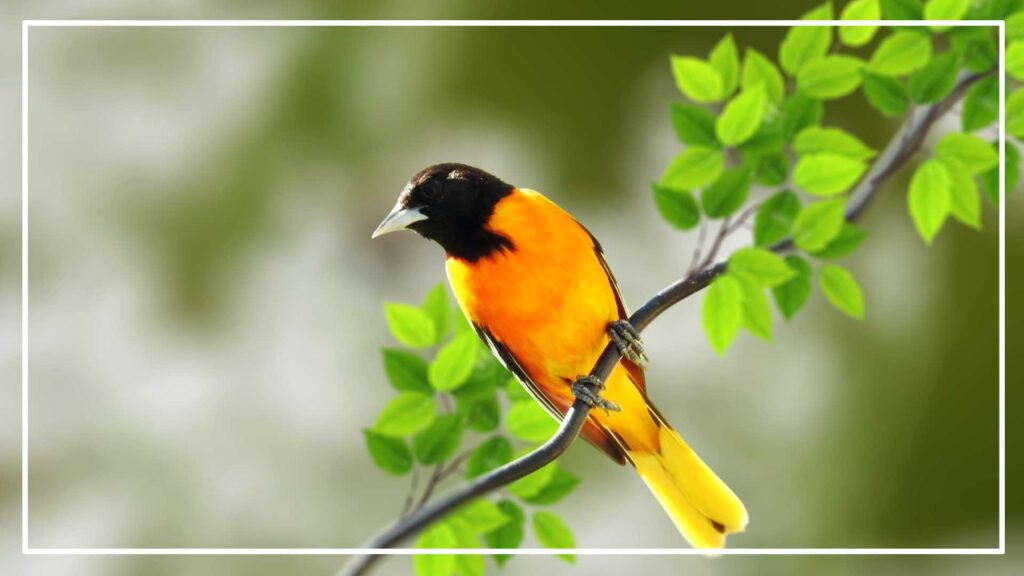
During a serene stroll through a woodland bordering an orchard, I saw the Orchard Oriole. It is a medium-sized yellow bird with black wings. it measures around 7 inches.
The Orchard Oriole’s striking combination of bright orange-yellow plumage and contrasting black wings and tail was a visual delight. Its colors resembled a vibrant sunset and the oriole seemed to wear them with regal grace as it flitted among the branches.
As I observed, I was treated to its melodious song, a series of sweet, whistling notes that added a musical dimension to the tranquil orchard. It felt as though the oriole was serenading the fruit trees and wildflowers.
Western Tanager
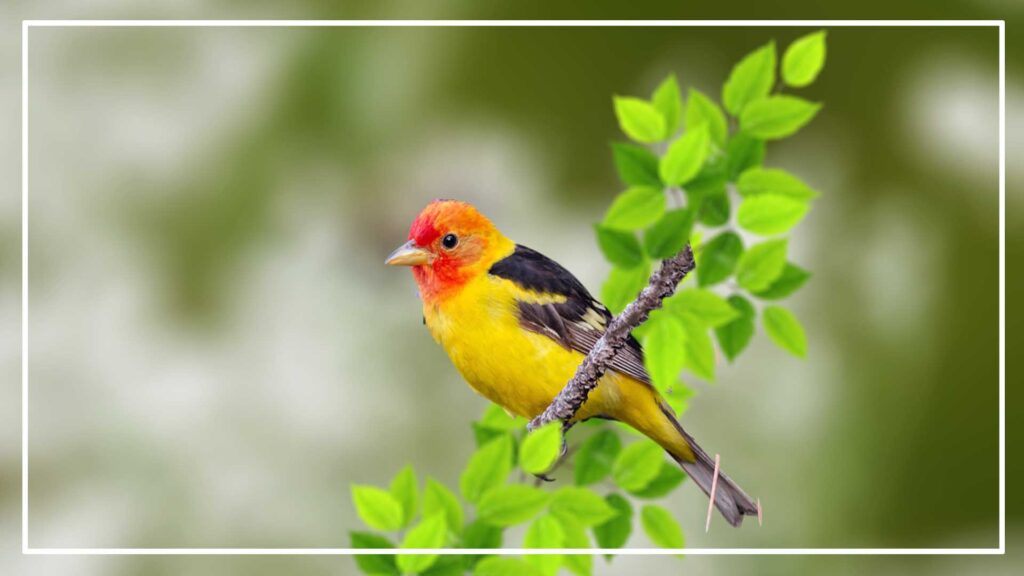
My enchanting encounter with the Western Tanager took place amidst the towering coniferous forests of the western wilderness. This medium-sized bird, measuring around 7 inches, was a vibrant burst of color against the sea of green.
Its appearance was nothing short of spectacular. The Western Tanager flaunted a bright yellow plumage that resembled the hue of fresh lemons. What truly set it apart were its striking black wings.
As I watched it flit gracefully through the canopy, I was captivated by its agile foraging skills. It expertly captured insects with remarkable precision, almost like a woodland acrobat.
Largest Yellow Birds With Black Wings
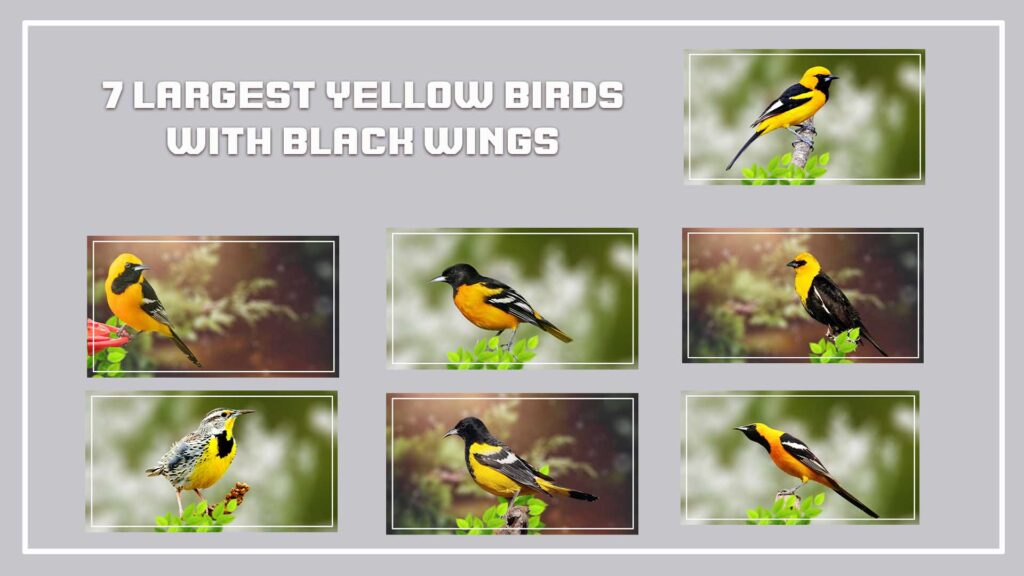
There are seven Largest Yellow Birds With Black Wings: Black-Hooded Oriole, Yellow-Headed Blackbird, Scott’s Oriole, Audubon’s Oriole, Western Meadowlark, Baltimore Oriole, and White-Edged Oriole. Each bird is a group of black and yellow birds. When you are searching for a bird that has a black head and yellow birdy, you can find them. However, After you study, you can find your searching able bird.
Black-Hooded Oriole
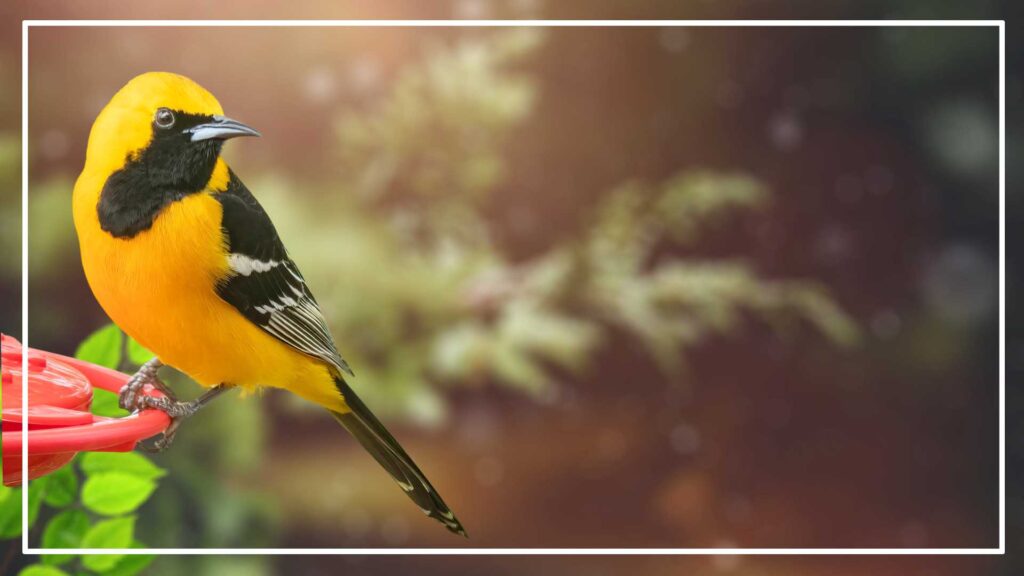
About 10 years ago, I discovered Black-Hooded Oriole. The Black-Hooded Oriale is the largest bird among the yellow birds with black wings. Its size is around 7 to 9 inches in length and its Weight: is 0.8 oz (24 g) The wingspan: is 9.1 to 11.0 in.
The Black-Hooded Oriole has a jet-black hood that envelops its head and strikingly bright yellow plumage adorns its body. It was as if the sun itself had painted this bird, creating a perfect harmony between black and yellow.
As I watched, the oriole’s ebony wings, elegantly adorned with white patches, carried it effortlessly through the canopy. Its movements were a graceful ballet in the midst of the emerald foliage.
Yellow-Headed Blackbird

The Yellow-Headed Blackbird is one of the large birds among the black and yellow birds. From its name, You can understand that its head is yellow. I found the bird in California although it is also found in general United States and Canada. It size around 8 to 10 inches (20 to 25 centimeters) long. Its wings are black with prominent white patches at the bend of the wing.
The Yellow-Headed Blackbird is aptly named for its stunning yellow head and chest, a vivid contrast to its sleek black body and wings.
As I observed, the blackbird’s vibrant plumage stood out against the tall marsh grasses. It moved gracefully, expertly navigating the reeds and cattails while foraging for insects and seeds.
Encountering the Yellow-Headed Blackbird was a memorable experience, a reminder of the incredible diversity of birdlife in wetland habitats.
Scott’s Oriole
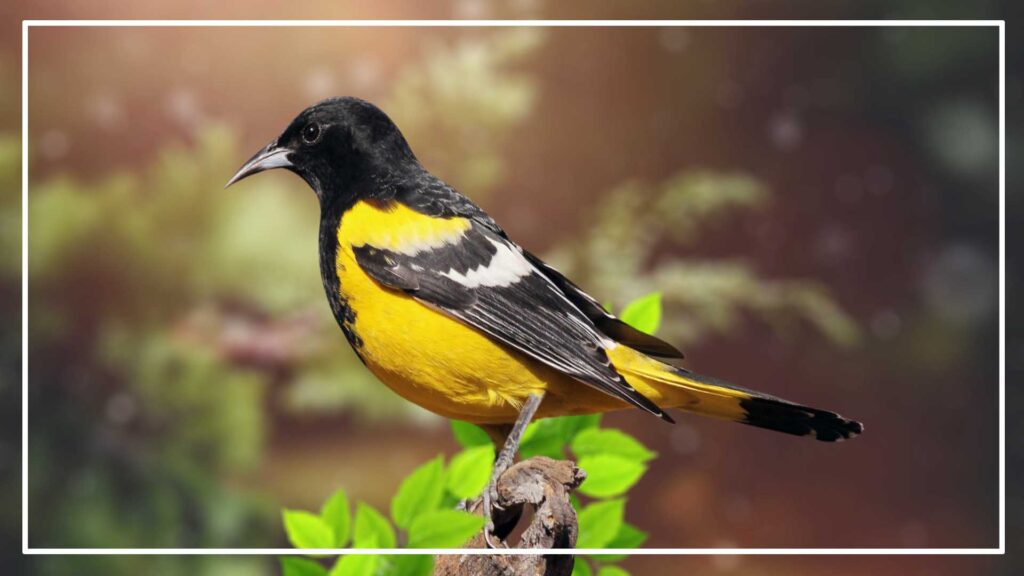
I discovered the Scott’s Oriole in the United States. It medium-sized bird measuring around 8 to 9 inches but it is a large bird among the 21 yellow birds.
Ocott’s Oriole is one of the most beautiful birds for its coloration. Its head and beak are black. Its wing is also black with a white stripe. When you see it, you can categorize it as a yellow bird with a long tail. Its tail is long with a back and yellow.
Sometimes I see the Scott’s Orioles in my garden, They eat mostly insects, fruit, and nectar in my garden.
I was captivated by its agile foraging skills, as it skillfully extracted insects and spiders from the desert shrubbery. Its slender, slightly curved beak was an essential tool in this arid hunting ground.
Audubon’s Oriole
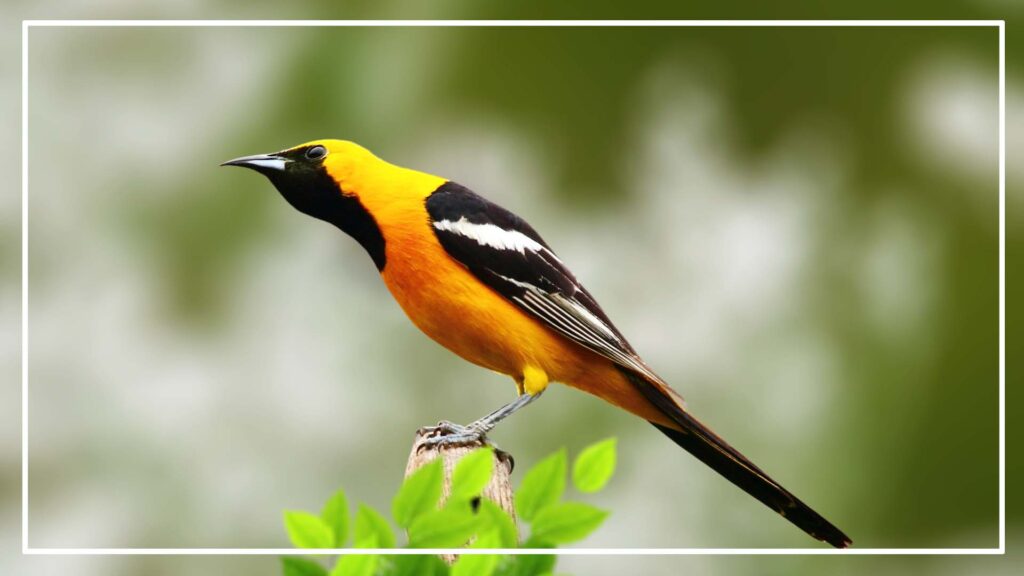
The Audubon’s Oriole is typically found in the United States. It’s a medium-sized yellow bird with black wings. It measures around 8.5 inches. it immediately captured my attention with its striking appearance.
When I saw the birds, I did not identify the differences between Audubon’s Oriole and Scott’s Oriole. However, They have some differences. For example:
| Characteristic | Scott’s Oriole (Icterus parisorum) | Audubon’s Oriole (Icterus graduacauda) |
|---|---|---|
| Plumage Color | Bright yellow plumage with black throat and mask. Males have a large white wing patch. Females are duller with a yellowish-greenish hue. | Black plumage with a bright yellow patch on the shoulders and rump. Males have a striking yellow crown. Females are similarly colored but less vivid. |
| Size | Medium-sized oriole, approximately 7-8 inches (18-20 cm) in length. | Slightly larger than Scott’s Oriole, measuring about 8-9 inches (20-23 cm) in length. |
| Bill Shape | Strong, slightly curved bill with a pointed tip. | Stout, conical bill with a more pronounced curve. |
| Geographic Range | Primarily found in the southwestern United States and Mexico, especially in arid or desert habitats. | Endemic to the thorn forests and woodlands of Mexico. It is not found in the United States. |
As I observed, the oriole’s agile and acrobatic movements among the trees were impressive. It skillfully captured insects and foraged for berries.
What truly enchanted me was its melodious song, a series of clear, flute-like notes that resonated through the forest. It was as if the woodland itself had come alive with music.
Western Meadowlark
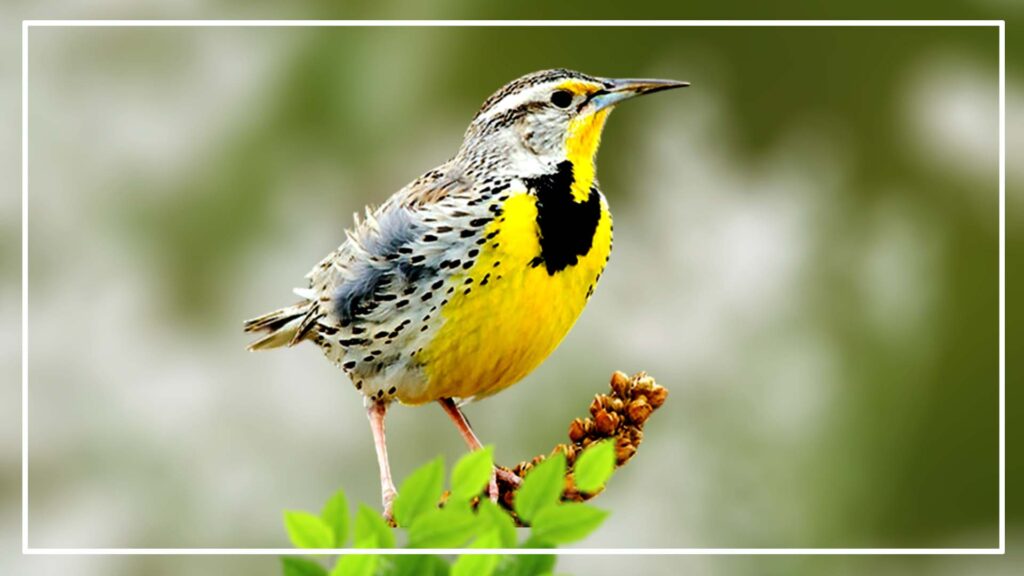
The Western Meadowlark is a large bird with brown and black wings. It measures around 9.5 inches in length. It has a white stripe on its brown wings. Its breasts are yellow with the neck down part.
Western Meadowlark is a yellow and black bird with a long beak. It expertly captured insects, seeds, and small invertebrates.
What truly enchanted me was its melodious song, a sweet and flute-like melody that resonated across the grasslands. It felt as though the meadow itself was singing, a soothing and peaceful serenade.
Baltimore Oriole
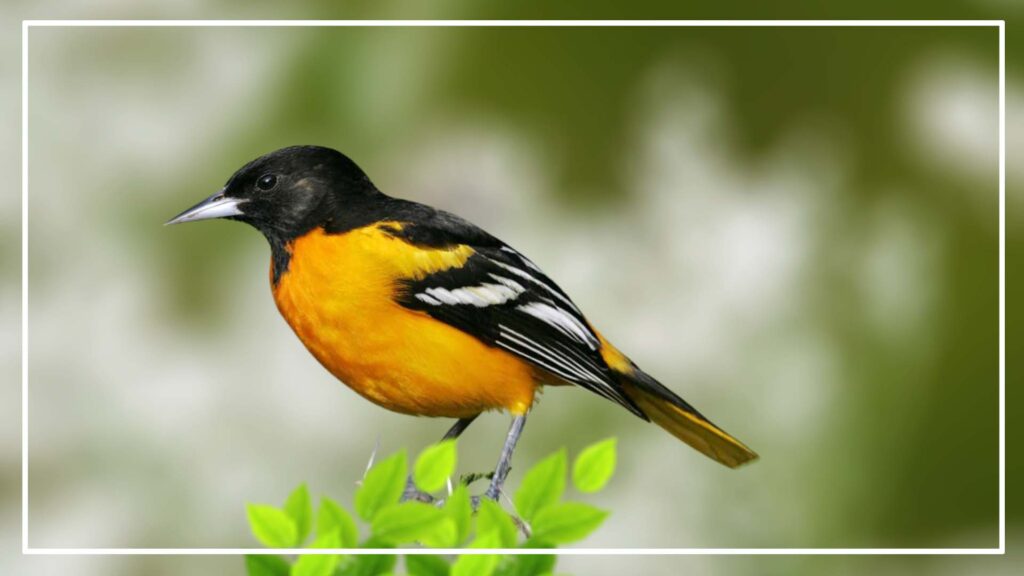
The Baltimore Oriole is a strikingly vibrant bird known for its vivid plumage. Males boast bright orange plumage on their bodies and head, which contrasts beautifully with their black wings and tail. They also exhibit a black throat patch and a white bar on their wings.
In terms of size, Baltimore Orioles are medium-sized birds, measuring approximately 7 to 8 inches (18 to 20 cm) in length. Their wings are moderately long and pointed, allowing them to be agile fliers, which is useful for catching insects and navigating their wooded habitats. Overall, the Baltimore Oriole’s striking coloration and graceful appearance make it a favorite among birdwatchers in North America.
White-Edged Oriole
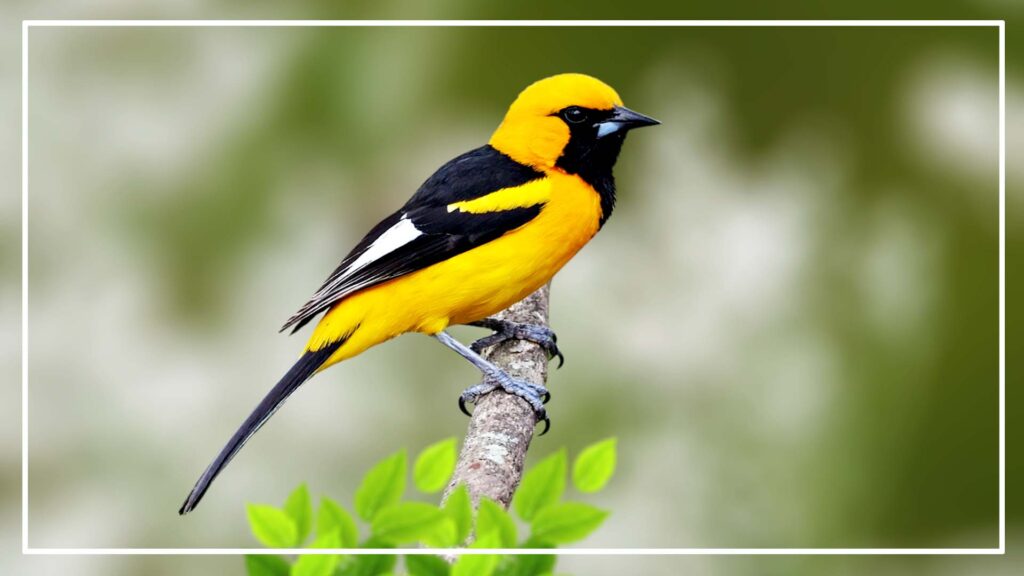
The White-Edged Oriole is a striking bird with a unique coloration. It has a bright yellow body and head, with a black mask that extends from its eyes to its throat. The most distinctive feature is the white edge of its wings, which gives the bird its name. It also has a long, slender bill and a relatively short tail.
White-edged orioles are small to medium-sized birds, measuring about 6.5 to 7.5 inches (16.5 to 19 cm) in length.
These orioles are typically found in a variety of forested habitats, including tropical rainforests, humid lowland forests, and forest edges. They can also be spotted in gardens and plantations.
The White-Edged Oriole’s range extends from southern Mexico through Central America to northern South America. It can be found in countries like Mexico, Belize, Guatemala, Honduras, Nicaragua, Costa Rica, Panama, Colombia, Venezuela, and Ecuador.
Their diet primarily consists of nectar from flowers, insects, and fruit. They are known to be active foragers, probing flowers for nectar and searching for insects in tree canopies.
